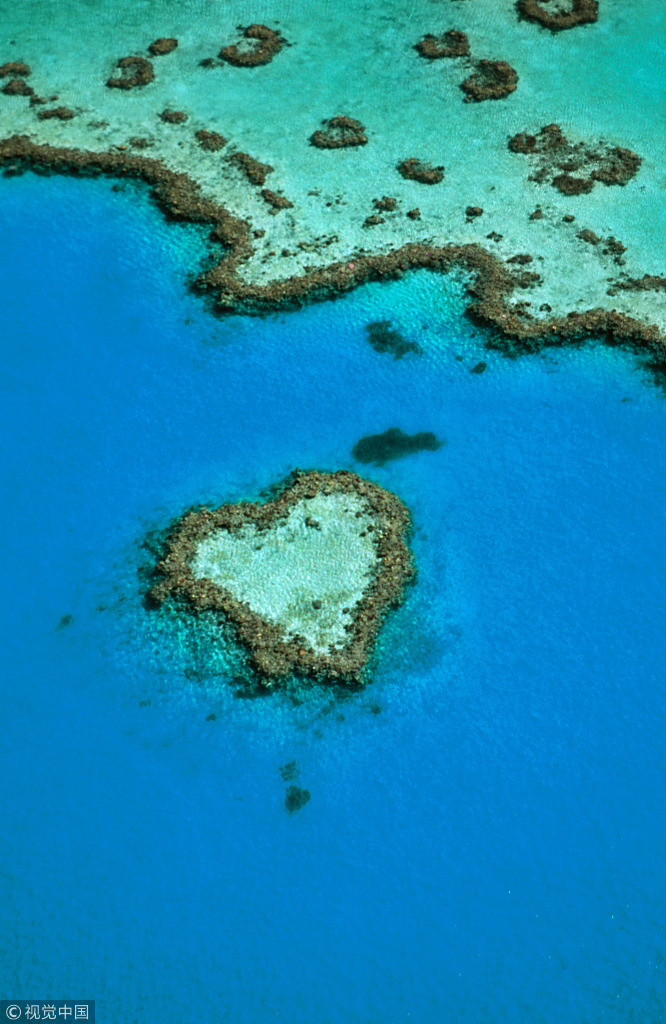Clash over Great Barrier Reef
China Daily | Updated: 2018-09-29 10:07

Competing interests seen in battle between science, tourism
SYDNEY - A row is raging over Australia's warming-damaged Great Barrier Reef, with firms worried that scientists' apocalyptic warnings are scaring visitors out of the water.
Every year, more than two million snorkel-wielding tourists head to Australia's famed coral ecosystem, generating revenues of $4.3 billion and supporting 64,000 local jobs.
But damage done by higher temperatures - which turn patches of the reef ashen white - has threatened to put a break on the number of tourists willing to wrestle their way into a wet suit.
There was surprise then, when the Reef and Rainforest Research Center recently published a markedly more optimistic report, heralding "significant signs of recovery" at major dive sites around Cairns and prompting a flurry of upbeat news coverage.
If the report's findings seemed out of kilter with other studies about the reef, that was by design.
It was part of an effort to show that not all of the Great Barrier Reef is an aquatic wasteland, according to Col McKenzie of tourism industry lobby group AMPTO, which helped carry out the research.
"Overall, are we seeing a drop in visitation because of the negative press, absolutely we are, there's no doubt about that," McKenzie said.
He suggested visitor numbers to the reef and nearby islands had dropped by 10 percent in 2017, and were on track to plunge by a further 15 percent this year.
Although government data shows that the number of visitors to the broader region has actually increased, those figures are older and don't include coral-viewing activities.
McKenzie said it was vital to get the message out that some areas of the massive ecosystem are still teeming with color and life.
"What people miss with our reef system is... it's a massive structure," he said.
His comments are the latest salvo in a battle between ecologists and the tourism industry, as they struggle to come to terms with competing interests and new realities on the reef.
Conflicting interests
Professor Terry Hughes of James Cook University, who leads the surveys of bleached corals, cautioned that while some damaged coral regain their color within several months, more badly damaged reefs can take a decade to recover.
"Basically we are in year one in the middle of the reef, or year two in the northern reefs, in the decade-long process of recovery," he said.
Even within the Australian government, there are conflicting interests at play, as well as rolling debates about how best to respond.
Canberra has - so far successfully - urged UNESCO to hold off listing the reef as an endangered World Heritage site, fearing it would have an adverse economic impact and lead to tougher restrictions on local industry.
Australians also appear divided on damage done to the reef.
Only half of the country thinks that climate change is already causing the destruction of reef, according to an annual Ipsos poll on environmental issues.
Whichever way the political winds blow, scientists like Hughes are determined to document changes to one of the world's most biodiverse regions.
"The unknown, of course, is whether we'll get another bleaching event, which potentially could come as soon as early next year if we get a heat wave," he said.
AFP
























